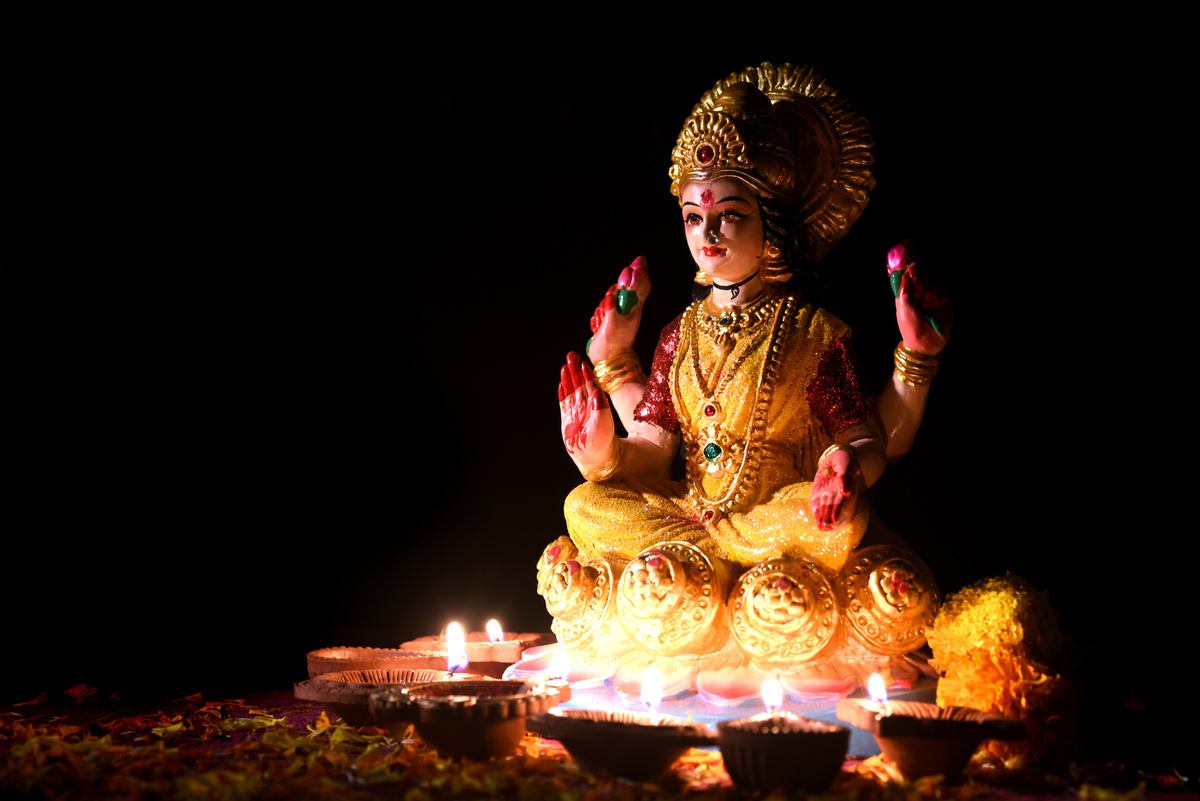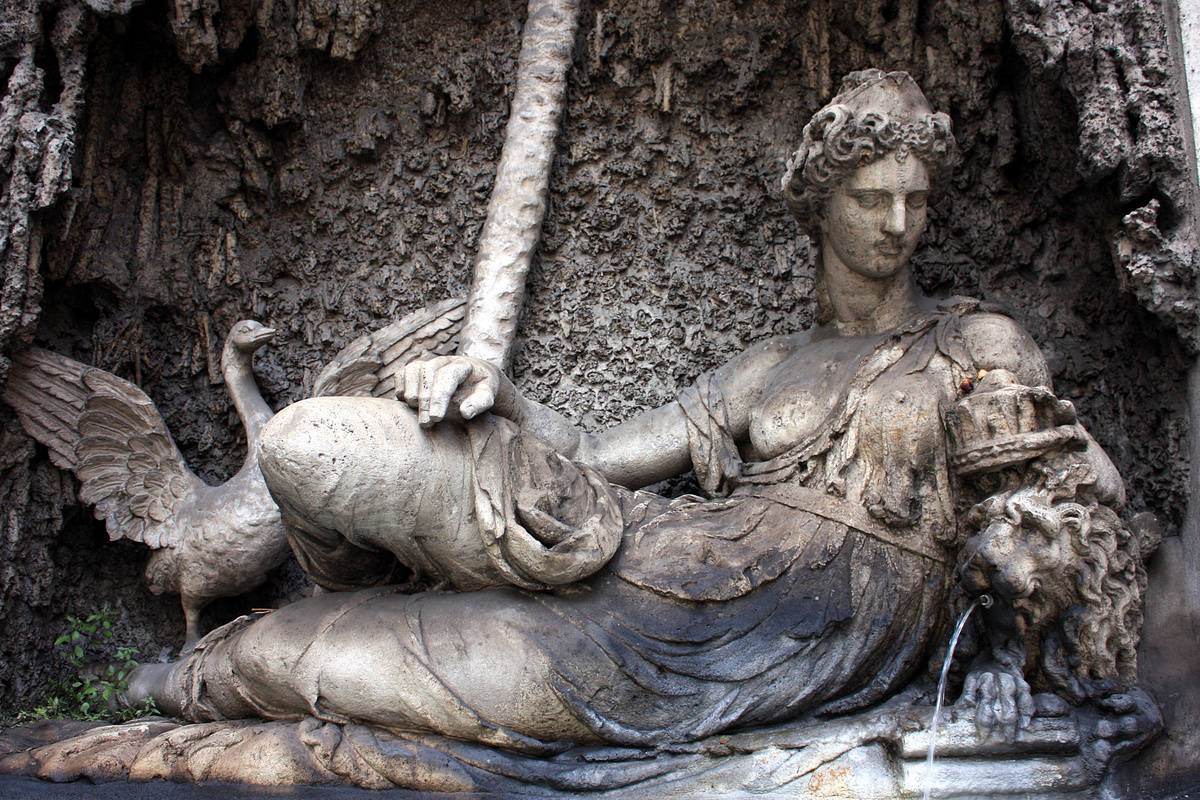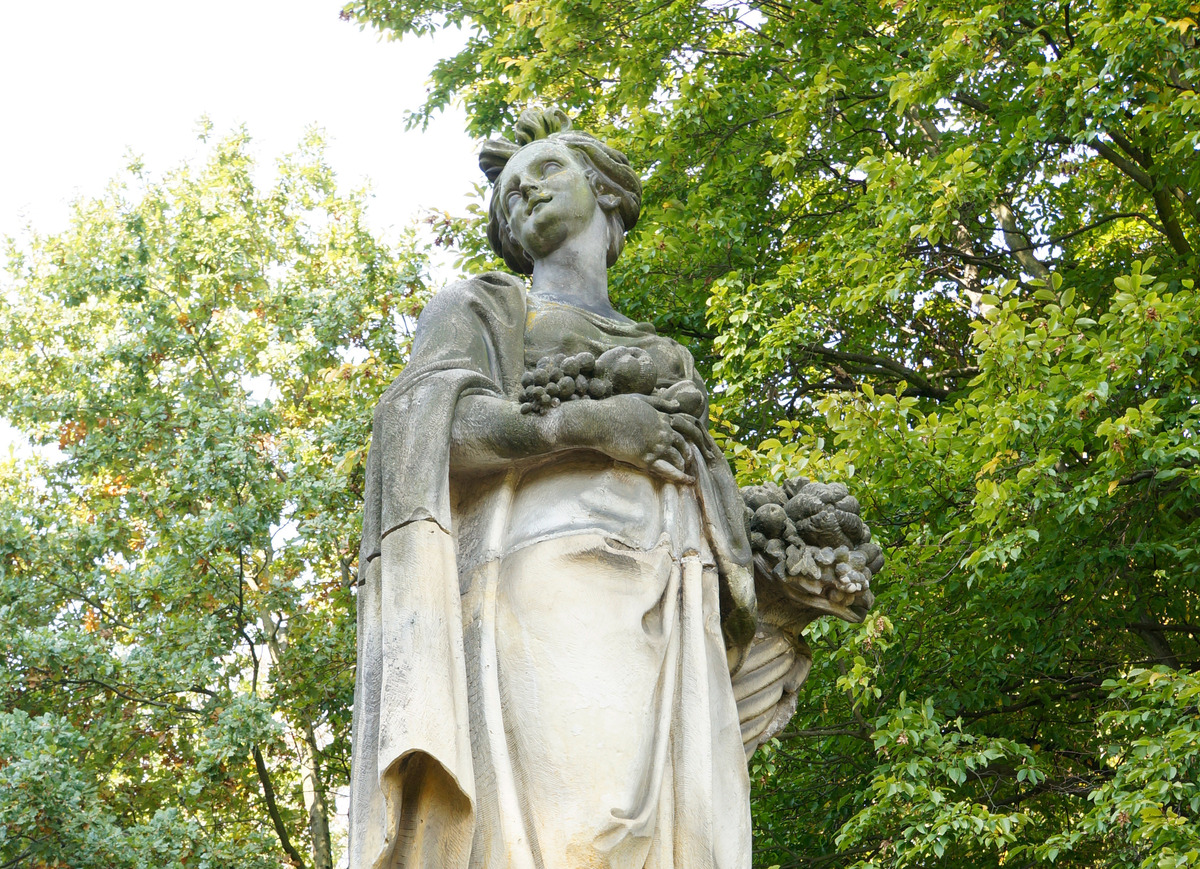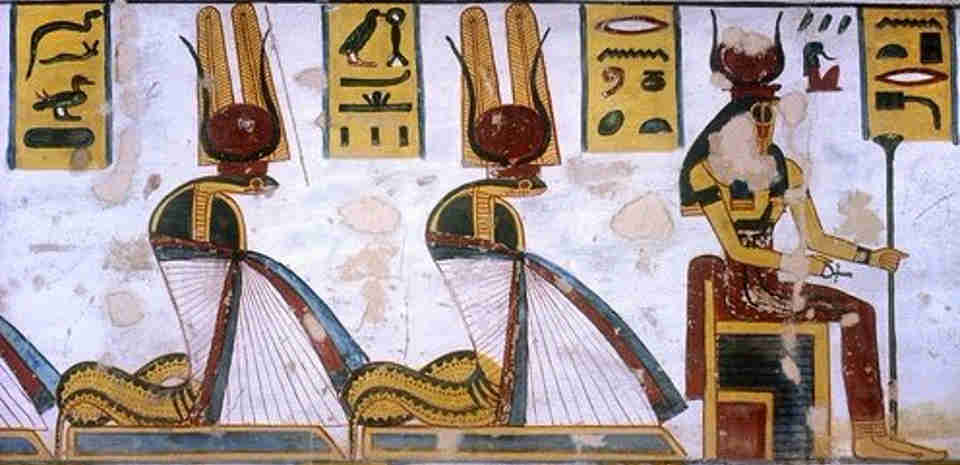Table of contents
What are the goddesses of fortune?

The planet Venus, is who protects the goddesses of fortune, and it is from these goddesses that people receive loving energy, beauty and sensuality. In addition, they bring prosperity, material abundance and also reproductive capacity and abundance of food.
One way used to represent the goddesses of fortune, is as being the Great Mother, a name received by them from the Pantheon. This title was given to them because they are always willing to listen to people's needs with an open heart.
Therefore, when there are problems concerning financial life, love, beauty and sexuality, just make a connection with the goddesses of fortune. They will help you solve the problems with their loving hearts.
In today's text we will talk about the 6 goddesses of fortune, learn more about some aspects and information related to the Roman goddess of fortune, Oxum goddess of gold, Roman goddess Juno Moneta, Pomona the Roman goddess of abundance, Renenutet the Egyptian goddess, and how to have the presence of these goddesses in life.
Roman goddess Fortuna
The Roman goddess of Fortune, goddess Tique, is also seen as the goddess of good luck and success, over time she became an important representation of fortune and abundance in the Roman Empire.
According to tradition, to bring this goddess closer to people's lives just light a green or golden candle, and ask for her presence. In this part of the text learn some characteristics brought by the goddess Tique, the Roman goddess of fortune, as the mythology involved in its existence.
Mythology
For mythology, the goddess Tique, also known as the goddess of Fortune, originates from Greece and Rome, places where she is seen as the goddess of fortune, financial abundance and good luck. Considered as a goddess with many powers.
This goddess, despite her great power, is blind, but not because of her inability to see, but because she distributed her luck without criteria. To give luck to everyone, she did not use any criteria for choosing, she only gave.
Fortune and the cult of history
The goddess of fortune or Tique, according to history, was the only one of the goddess that slaves were allowed to worship. This is also a demonstration of their generosity and way of giving away their good luck and prosperity, without discrimination.
The goddess Tique, takes her blessings to everyone, without distinguishing social class, creed, color or nationality. In this way, her benefits were directed to all people who needed her help, giving the right of growth and prosperity to people's lives in general.
Representations
Some ways of representing the goddess of fortune, Tic, is through the Cornucopia, a horn-shaped vase, which is a symbol of abundance, trade and fertility, it is usually filled with gold and also fruit and other foods.
Another way to represent the goddess Tic is with the Wheel of Fortune, which also means the giving of benefits, luck and prosperity to all people, and may also benefit those who usually do harm to others.
Goddess of fortune Lakshmi

The goddess of fortune Lakshmi, has her name derived from Sanskrit, Laksya, and its translation means goal, objective, or completion. Another point to be mentioned about Lakshmi, is that she was worshipped in Hinduism, to bring material abundance, protection and luck.
In this part of the article, learn a little more about the mythology surrounding the goddess Lakchmi, the way she is worshipped throughout history and how she is represented.
Mythology
According to mythology, Lakshmi is a goddess of fortune venerated in Hindu culture, married to the god Vishnu, who was the one who supported the universe of Hinduism. She is seen in this culture, as the personification of beauty, abundance, benevolence, besides representing wealth and fortune.
People seek the help of this goddess whenever they need to solve any situation related to love, material goods and power. In addition, she represents the feminine force, being famous for her permanent young and beautiful appearance.
Lakshmi and the cult of history
The goddess Lakshmi, had her worship throughout history linked to an important connection so that people in need could receive greater abundance in their families. This has a stronger meaning for the Hindu woman, as she is always in search of maintaining the health and prosperity of her home.
For this, this goddess of fortune is worshipped by these women to achieve a harmonious life, mainly because this goddess is regarded as a perfect wife. This factor is confirmed by the story of her harmonious relationship with Vishnu.
Representations
The main representation of Lakshmi, is that of a woman of beautiful appearance, who appears seated on a lotus flower. This goddess of fortune has the complexion with gold color, besides having 4 arms, of which two of them carry vessels full of prosperity and gold.
In the other pair of arms, Lakshmi holds lotus flowers, in addition she is always accompanied by two elephants, who are constantly at her side. These offer them gifts, flower ornaments and throw water over her.
Goddess of gold Oxum

The goddess of gold Oxum is one of the goddesses of fortune, a deity of the African culture, of Candomblé and also of the game of cowrie shells. She brings teachings about a life that vibrates in love, that takes people in her arms when they face difficult moments.
In this excerpt from the text, understand a little more about some aspects of this goddess, such as the mythology surrounding the goddess of gold Oxum, the form of worship to her through history and how she is represented.
Mythology
The goddess of gold Oxum, is known as Yabá, a female orixá, to Yoruba culture, who has power over the waters of rivers and waterfalls. This goddess of fortune, also known as the goddess of the river, is well known for being located in the southwestern region of Nigeria.
This goddess is related to spiritual and material riches, sensitivity and wisdom in people's lives. In addition, she is also linked to the game of Búzios and female empowerment. In African culture she is revered as the sovereign of the ijexá people, being entitled as Iyálodê, which represents a great mother among all the orixás.
Oxum and the cult through history
For Candomblé, the orixás represent previous generations that were made divine, the history of this form of worship to this goddess of fortune, Oxum, has its origins in Africa, more precisely in the Yoruba population. This goddess was the daughter of Iemanjá, and Oxalá.
The goddess of gold, Oxum, was the wife of Xangô, and according to the story, she also had a relationship with Ogum, Exu, Orunmilá and Oxóssi. Oxum has the power to help people who are having problems related to fertility.
Representations
Each of the goddesses of fortune has a form of representation, which speaks directly about the strength and power emanated by her. The goddess of gold Oxum, also has a specific representation brought from African tradition.
The goddess Oxum is the symbol of wisdom and female empowerment, showing all living the importance of women's opinions. She shows that female intelligence is very important and can help solve problems concerning humanity.
Roman goddess Juno Moneta

The Roman goddess of fortune, Juno Moneta, has always been worshipped in the city of Rome, more precisely at the top of the north side of the Capitol. She became known as the goddess of fortune, because in a moment of conflict, she advised the army, that in order not to lack resources, they should make a fair war.
For this advice, the coin of the time was minted in his honor, with his image. In this part of the article learn more about the Roman goddess of fortune Juno Moneta, information such as mythology surrounding its history, the worship of her through history and its representations.
Mythology
The goddess of fortune Juno Moneta was known as the Roman goddess of marriage, she was married to Jupiter and the sovereign of all the gods. This goddess also refers to the goddess Hera in the mythological history of Greece, who was seen as the goddess who protected the state and possessed many qualities and duties.
In addition, Juno Moneta was responsible for protecting the resources of the Treasury, that is, she was the goddess of currency and prosperity. A curiosity about the goddess Juno Moneta is that she appears on some notes and also real coins.
Juno Moneta and the cult of history
Juno Moneta, the goddess of fortune, is worshiped by history in a festival held between 21 and 24 June, including this month was named in his honor. During the festivities bonfires were made that served to ward off evil spirits.
This cult was also used to bless and achieve an abundant harvest for the coming year. Today, the festivals to worship Juno continue to occur, including in Christianity, being known as June festivals, which are marked by abundance and much joy.
Representations
The known representations of Juno Moneta, this goddess of fortune, is related to respect and that in some cases was also represented as the representation of strength and even cruelty. For the Romans, Juno was known as the goddess of childbirth, so she was celebrated after the birth of a child.
In addition, Juno was related to several, almost all, female characteristics, including how women would act in marriage. Although she was a goddess who brought protection to all women, the focus of this guardianship was geared towards married women and mothers-to-be.
Roman Goddess Abundance

This Roman goddess of fortune, also known as goddess of abundance, is called Pomona, and has meanings coming from the culture of Greece as well. In addition, Pomona was also reputed to be the goddess of fruits and plenty.
Below, know a little more about this goddess of abundance, Pomona, information such as its mythology, the worship of this goddess throughout history, and their representations.
Mythology
In Greek mythology, Pomona is also known as the goddess of agriculture, while in Roman mythology she is seen as the goddess of abundance and fruit. This goddess is seen in a very particular way in this aspect, being linked to the flowering of the trees.
Thus, this deity both in Greece, as for the Romans was seen as a goddess who represented prosperity and abundance. Bringing much abundance to those who make their requests in times of scarcity.
Abundance and the cult of history
This goddess of fortune, Pomona, had her cult throughout history focused on abundance, mainly related to fruit. For this, a sacred park was held in her honor, which was called Pomonal, located south of the Via Ostiense.
However, there is no knowledge of an event that was held in her honor, not even in ancient times. Even so, she was a very important character in the history of cults in favor of the harvest.
Representations
Pomona, this goddess of fortune, has had several representations in statues and paintings, depicted as a young woman, with adornments of roses and fruit on her head. She has also been represented in painting, showing the goddess sacred park, accompanied by Vertumnus.
One of the most famous representations of Pomona was realized in a sculpture made in marble, by Rodin. In this way, this goddess was very represented in works of art of renowned artists during the history of humanity.
Egyptian goddess Renenutet

The Egyptian goddess Renenutet, is another goddess of fortune, also known as goddess of fertility. For the ancient Egyptians, this deity was the one who took care of the crops. This is because it was a period when snakes were seen hiding in the crops, and Renenutet was represented by a snake.
In this excerpt from the text, learn more information concerning the Egyptian goddess Renenutet, goddess of fortune as the mythology involved in its emergence, the cult throughout history to this goddess, and their representations.
Mythology
In ancient Egypt, people knew this goddess of fortune, Renenutet, as the goddess of breastfeeding. She was known as the snake goddess, much worshipped in the Delta region, she was the goddess who protected babies.
According to the belief of the Egyptians, when breastfeeding babies, Renenutet gave each of them a particular and unique name. And since for these ancient people, to have eternal life, it was necessary to have a name and an image that would survive the ages, this goddess became known as the goddess of destiny.
Renenutet and the cult of history
In honor of Renenutet, the goddess of fortune and harvest, a temple was erected in Dja, where festivities were held annually in her honor and in gratitude for the bountiful produce. During this festival, part of the harvest was offered to Renenutet.
In addition to this first temple in her honor, there were others built throughout Egypt over the years. She was also seen as the goddess who protected Pharaoh in the underworld, plus she also empowered the bands used in mummification.
Representations
The representations of this goddess of fortune, Renenutet, was of a woman presenting a cobra head, who wore a crown adorned with two feathers. At other times, on her head was a sun crown with cow horns.
Another way of representing this goddess was as a serpent suckling a baby, which represents the son of Pharaoh. Because she had the image of a serpent she was known as the goddess of the harvest, as it was common to see serpents entering the planting fields.
How can these goddesses be present in our lives?

To approach these goddesses of fortune, having them present in your life, just elaborate an altar adorned with flowers, with candles, some incense, stones and fruits. Then, make the choice of the goddess that best represents your need and add the image of this goddess.
Thus, it will be possible to be benefited by its powers, and life will be toasted with abundance and prosperity. Faith is the most important part at the time of making requests whether for prosperity, abundance of food or financial abundance.
In today's article, we have tried to bring as much information about the goddesses of fortune as possible so that people can get to know them and take advantage of their benefits.

